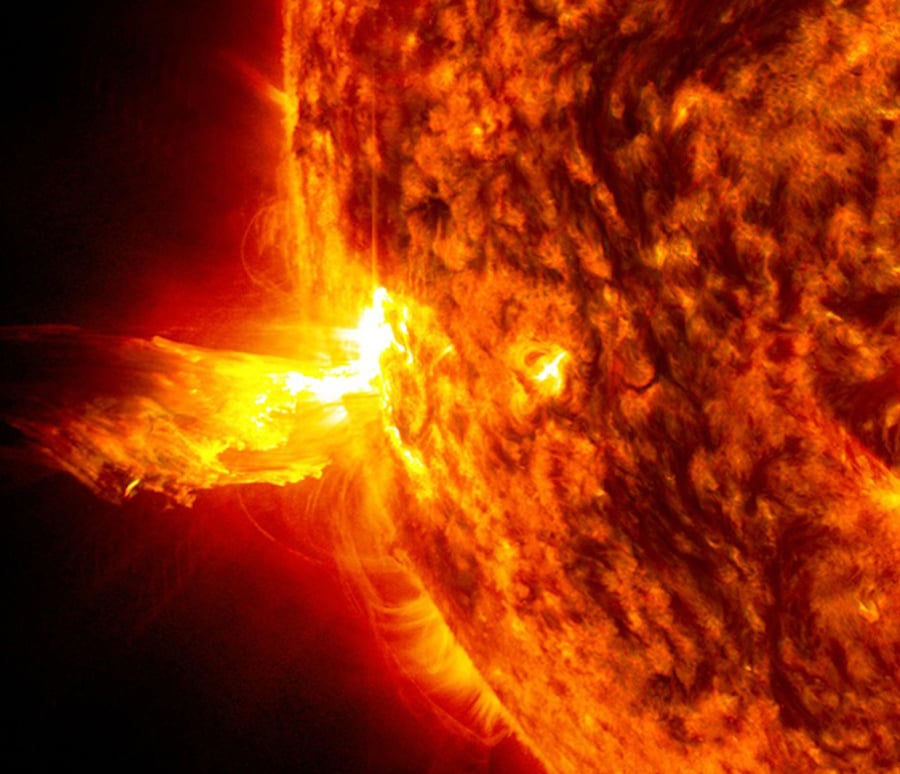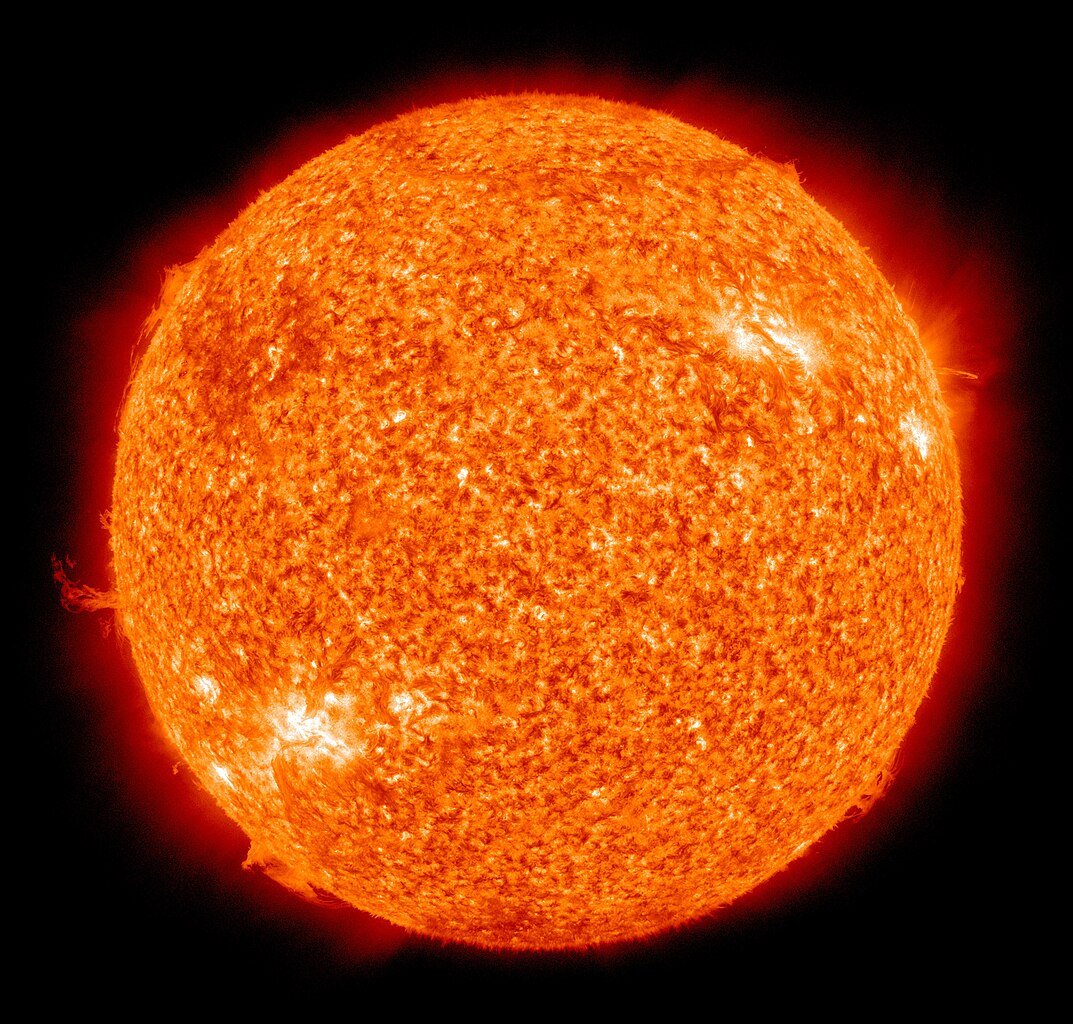The corona of the Sun is an extraordinary place, with temperatures exceeding one million degrees Celsius, far hotter than the Sun’s visible surface below. During solar flares, violent releases of magnetic energy, plasma can cool dramatically and condense into dense blobs that plummet back toward the Sun’s photosphere, its visible surface. These falling streams of cooler material create the phenomenon of coronal rain. However, existing solar models couldn’t explain the speed at which this cooling happens.
 During a total solar eclipse, the Sun’s corona and prominences are visible to the naked eye (Credit : Luc Viatour)
During a total solar eclipse, the Sun’s corona and prominences are visible to the naked eye (Credit : Luc Viatour)
Traditional solar models assumed that the distribution of specific elements throughout the corona remains constant across both space and time. This simplification made calculations manageable but created a significant problem when scientists tried to match their models with actual observations. Earlier theories required heating over hours or even days to produce the conditions necessary for coronal rain, yet solar flares unfold in mere minutes. Something fundamental was clearly missing from the picture.
Luke Benavitz, a graduate student, and astronomer Jeffrey Reep discovered the missing piece. Their research, demonstrates that allowing elemental abundances to vary with time produces models that finally match real solar observations. Elements like iron don’t remain uniformly distributed in the corona but shift dynamically as conditions change. When this variation is plugged into the models, coronal rain can form on the timescales actually observed during solar flares.
 Material rises from the edge of the Sun during a solar flare, as seen in extreme ultraviolet light by NASA’s Solar Dynamics Observatory (Credit : NASA/SDO)
Material rises from the edge of the Sun during a solar flare, as seen in extreme ultraviolet light by NASA’s Solar Dynamics Observatory (Credit : NASA/SDO)
Scientists use cooling processes to help understand heating mechanisms in the corona, since they cannot directly observe how energy is deposited into this region. If models have been treating the abundance of elements incorrectly as they have been, then estimates of cooling times have likely been wrong as well. This realisation suggests that fundamental assumptions about coronal heating may need revisiting.
Understanding that the distribution of elements change dynamically opens entirely new avenues for research into how the Sun’s outer layers behave and how energy travels through its atmosphere. These insights could eventually improve predictions of solar storms, the space weather that can disrupt satellites, power grids, and communications systems on Earth.
What began as an investigation into a curious solar phenomenon has revealed that our models of the Sun’s behaviour need considerable refinement. Sometimes the most important scientific breakthroughs come not from discovering entirely new phenomena, but from recognising that familiar assumptions were previously wrong.

